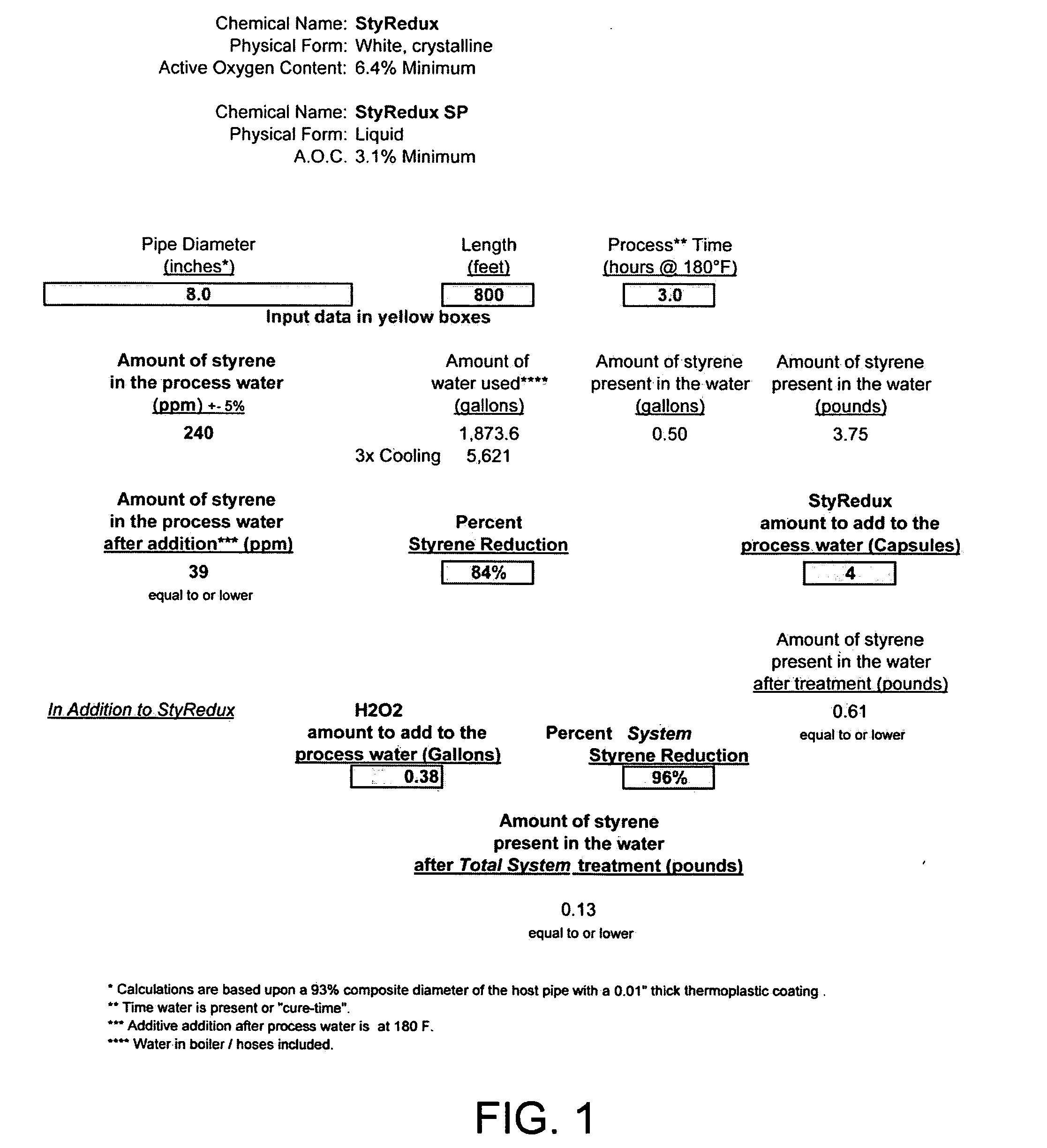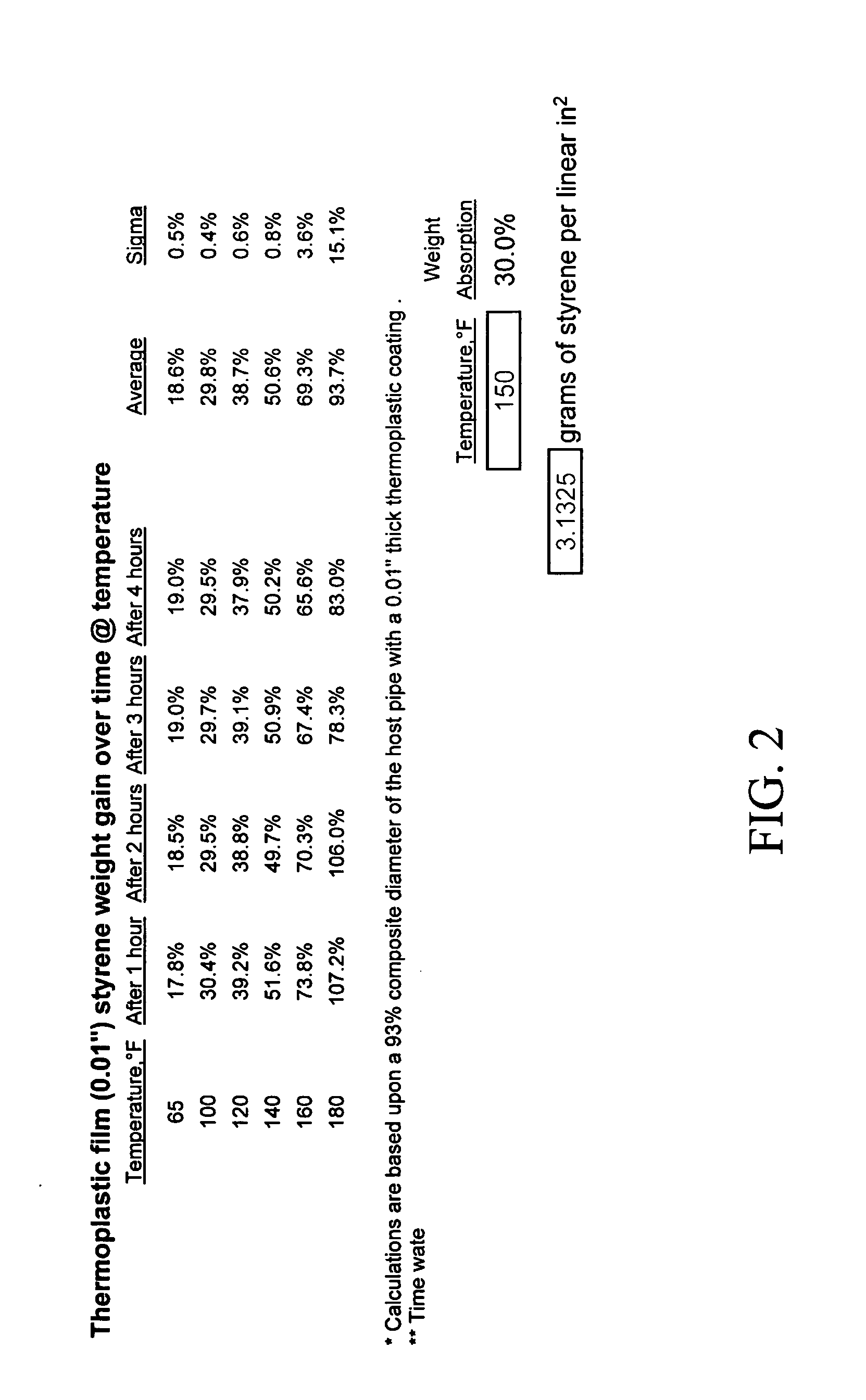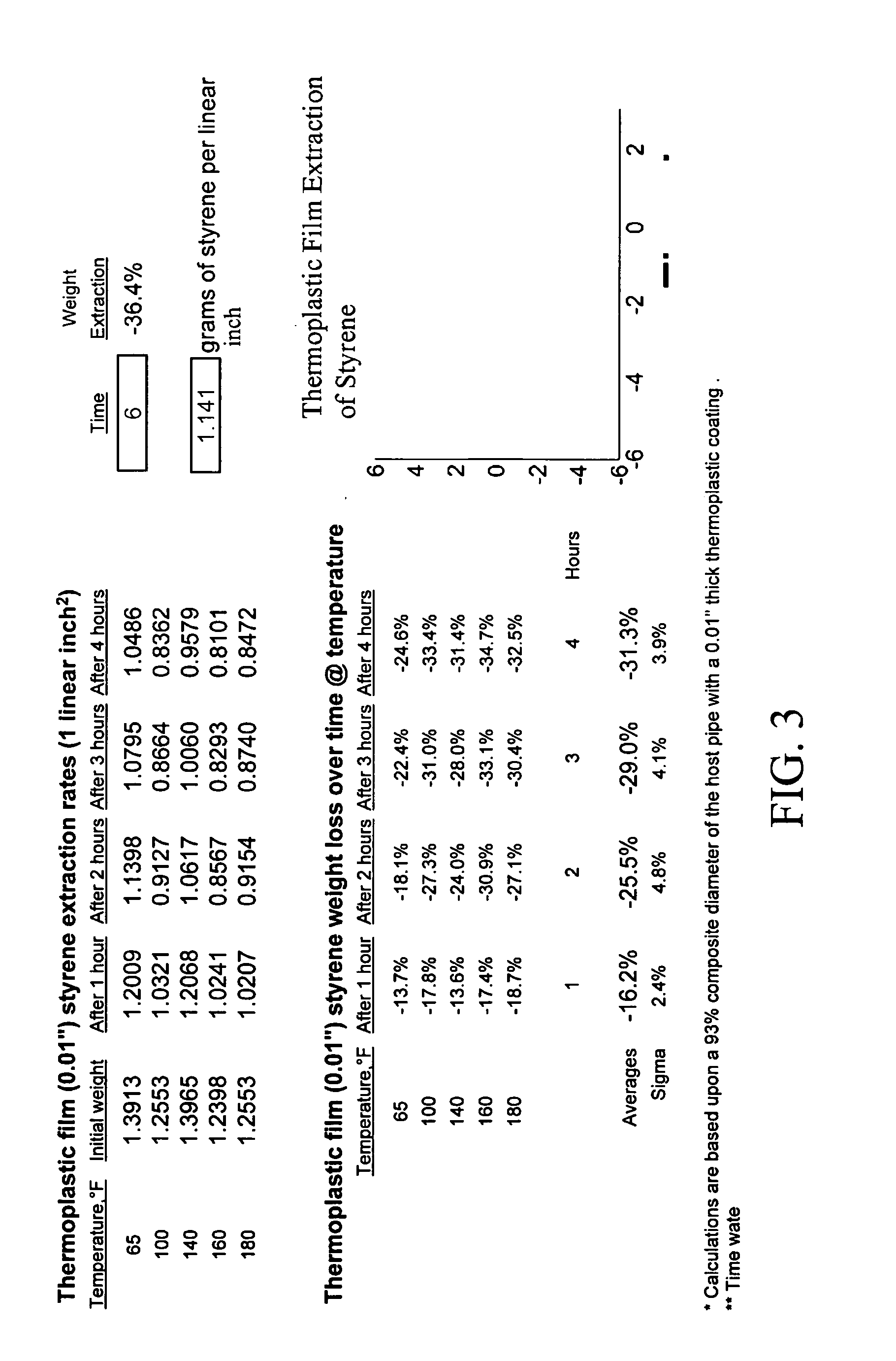Method and apparatus for controlling contamination from pipe coatings
a technology of styrene and aqueous environment, which is applied in the direction of instruments, halogen oxides/oxyacids, other chemical processes, etc., can solve the problems of contaminated water/condensate curing water with styrene, pipe cracking and damage, and unsuitability for intended use, so as to reduce toxics and pollutants, reduce residual monomers, and increase reactivity
- Summary
- Abstract
- Description
- Claims
- Application Information
AI Technical Summary
Benefits of technology
Problems solved by technology
Method used
Image
Examples
example 1
[0079]Hydrogen Peroxide Solution diluted (DI) to 3% by weight: 256 g (8.45 g)
[0080]Styrene Reduction Agent (SRA): 34:33:33 mix ratio: 0.1 g
[0081]The SRA and H2O2 were mixed to a resin emulsion state and coated onto the medium, which was then temperature cured until non tacky with the following parameters.
[0082]1) Cured without heat for 18 hrs
[0083]2) Same ratio: Heat to 90 F.: Cured non-tacky: 12 HRS
[0084]3) Same ratio: Heat to 105 F.: Cured non-tacky: 5 HRS
[0085]4) Same ratio: Heat to 125 F.: Cured non-tacky: 3 Hrs
[0086]5) Same Ratio: Heat to 180 F.: Cured non-tacky: 3-5 minutes
Tested by GC, EPA method 8260-B for volatile organic carbons,
BenzeneTolueneEthylbenzeneXylenesStyrenesample(PPM)(PPM)(PPM)(PPM)(PPM)10.4910.0350.0490.02811720.4640.0340.0610.02212830.6830.0660.3530.42544640.5220.0460.3240.413136
Addition of Styrene reduction Agent: 6 Pph per 100 parts styrene, +H2O2 6 Pph per 100 parts styrene: Equal Parts H2O2 (StyRedux SP): Styrene reduction Agent (StyRedux)
PercentStyreneRe...
PUM
| Property | Measurement | Unit |
|---|---|---|
| temperatures | aaaaa | aaaaa |
| weight | aaaaa | aaaaa |
| composition | aaaaa | aaaaa |
Abstract
Description
Claims
Application Information
 Login to View More
Login to View More - R&D
- Intellectual Property
- Life Sciences
- Materials
- Tech Scout
- Unparalleled Data Quality
- Higher Quality Content
- 60% Fewer Hallucinations
Browse by: Latest US Patents, China's latest patents, Technical Efficacy Thesaurus, Application Domain, Technology Topic, Popular Technical Reports.
© 2025 PatSnap. All rights reserved.Legal|Privacy policy|Modern Slavery Act Transparency Statement|Sitemap|About US| Contact US: help@patsnap.com



